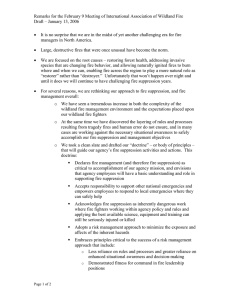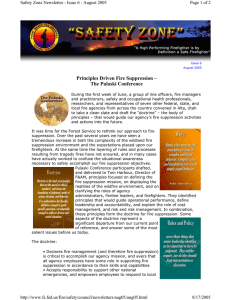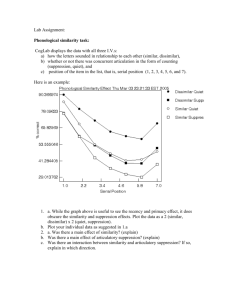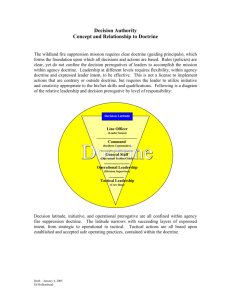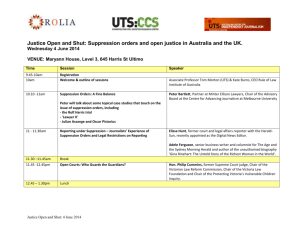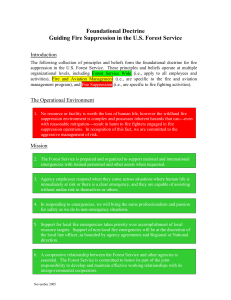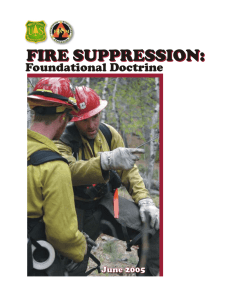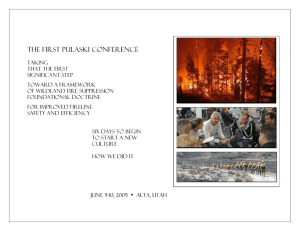Principles Driven Fire Suppression – The Pulaski Conference
advertisement
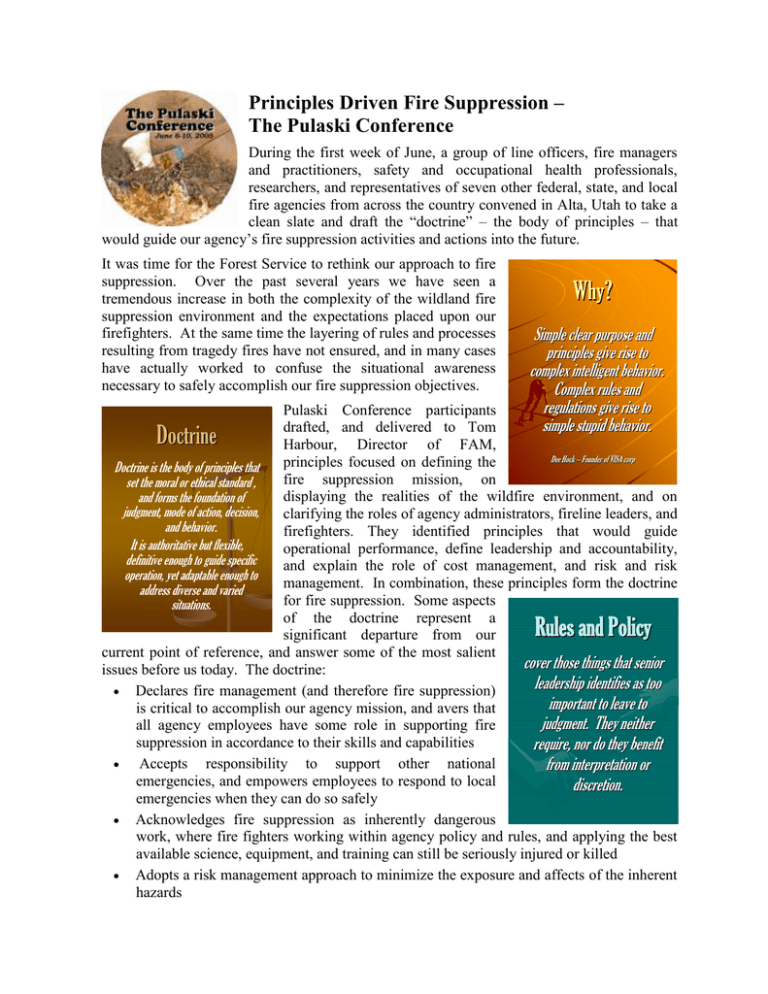
Principles Driven Fire Suppression – The Pulaski Conference During the first week of June, a group of line officers, fire managers and practitioners, safety and occupational health professionals, researchers, and representatives of seven other federal, state, and local fire agencies from across the country convened in Alta, Utah to take a clean slate and draft the “doctrine” – the body of principles – that would guide our agency’s fire suppression activities and actions into the future. It was time for the Forest Service to rethink our approach to fire suppression. Over the past several years we have seen a tremendous increase in both the complexity of the wildland fire suppression environment and the expectations placed upon our firefighters. At the same time the layering of rules and processes resulting from tragedy fires have not ensured, and in many cases have actually worked to confuse the situational awareness necessary to safely accomplish our fire suppression objectives. Why? Simple clear purpose and principles give rise to complex intelligent behavior. Complex rules and regulations give rise to simple stupid behavior. Pulaski Conference participants drafted, and delivered to Tom Harbour, Director of FAM, Dee Hock – Founder of VISA corp principles focused on defining the Doctrine is the body of principles that fire suppression mission, on set the moral or ethical standard , displaying the realities of the wildfire environment, and on and forms the foundation of judgment, mode of action, decision, clarifying the roles of agency administrators, fireline leaders, and and behavior. firefighters. They identified principles that would guide It is authoritative but flexible, operational performance, define leadership and accountability, definitive enough to guide specific and explain the role of cost management, and risk and risk operation, yet adaptable enough to management. In combination, these principles form the doctrine address diverse and varied for fire suppression. Some aspects situations. of the doctrine represent a significant departure from our current point of reference, and answer some of the most salient cover those things that senior issues before us today. The doctrine: leadership identifies as too Declares fire management (and therefore fire suppression) important to leave to is critical to accomplish our agency mission, and avers that judgment. They neither all agency employees have some role in supporting fire suppression in accordance to their skills and capabilities require, nor do they benefit Accepts responsibility to support other national from interpretation or emergencies, and empowers employees to respond to local discretion. emergencies when they can do so safely Acknowledges fire suppression as inherently dangerous work, where fire fighters working within agency policy and rules, and applying the best available science, equipment, and training can still be seriously injured or killed Adopts a risk management approach to minimize the exposure and affects of the inherent hazards Doctrine Rules and Policy Embraces principles critical to the success of a risk management approach, including: o Less reliance on rules and processes and greater reliance on judgment in decision-making o Demonstrated fitness for command in fire leadership positions o Accountability based on the quality of behaviors and decisions with respect to known expectations – not just outcomes o Reaffirmation of the need for decisive and effective fire suppression actions o The decentralization of command and control on the fireline This brief summary doesn’t do justice to the doctrine drafted at the Pulaski Conference. To see the entire work, visit the website at: http://www.fs.fed.us/r2/blackhills/news/vnr/releases/doctrinefinala.pdf The Forest Service National Leadership Team is currently in the process of formalizing their acceptance of this foundational doctrine for fire suppression. In doing so, they recognize that much of the doctrine is service wide in scope. Some of it spans the gamut of fire and aviation management. To their credit they understand and embrace the prospect that the work started at a small lodge in the mountains of Utah will have profound and lasting affect on the entire agency. “These are times in which genius would wish to live. It is not in the still calm of life or the repose of a pacific station that great characters are formed. The habits of a vigorous mind are formed in contending with difficulties. Great necessities call out great virtues. When a mind is raised and animated by scenes that engage the heart, then those qualities which would otherwise lay dormant wake into life and form the character of the hero and the statesman.” Abigail Adams in a letter to her son, John Quincy Adams, 1779.
